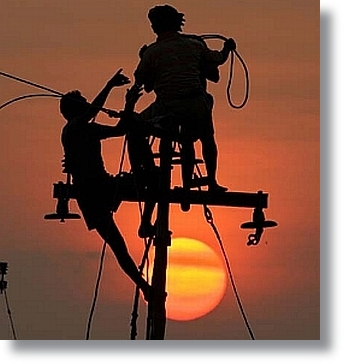Cost of Power Outages in Zimbabwe's Mining Sector

 |
Mining takes the third position in terms of contribution to GDP, at about 12.7 percent and is the second highest foreign currency earning sector; the highest being agriculture. The key legislation governing this sector are the Mines and Minerals Act (Chapter 21:05) and the Minerals Marketing Corporation of Zimbabwe Act (Chapter 21:04). The said legislation provide for the licensing, exploration and marketing of minerals in Zimbabwe.
The Zimbabwean government acknowledges the importance of the mining sector to the socio-economic development of the country. Currently, the sector employs about, 55000 people formally. The figure was higher than this before the 2008 downturn of global market prices, world recession and other domestic problems. Mining is particularly susceptible to power quality issues. Many mine sites are remotely located with respect to grid feeder lines.
Reliable electricity power supply delivered on demand is a cornerstone for mining electricity-consuming equipment. A central feature in electricity’s value to mining consumers is the frequent outage for which electricity is the primary energy source. In Zimbabwe, poor electricity supply is perhaps the greatest infrastructure problem confronting the mining sector.
Several researches have tried to estimate cost of power outages to the sector elsewhere have shown different effects and cost. Mining as an industry or sector suffers the same consequences and industry researches can be equated to mining too. To start with, a study focusing on the effects of power outages in Pakistan estimated that the direct costs of load shedding to industry during a year, coupled with the indirect multiplier effects on other sectors, resulted in a 1.8 percent reduction in GDP and a 4.2 percent reduction in the volume of manufactured exports. In India, a 1985 study concluded that power outages were a major factor in low capacity utilization in industry, and estimated the total production losses in 1983/84 at 1.5 percent of GDP. Similarly, power rationing in Colombia was estimated to reduce overall economic output by almost 1 percent of GDP in 1992.
Changes in the stock of electricity infrastructure supply have important implications for the cost structure of mining firms. African mining enterprises reported power outages on an average of 56 days a year costing firms 5-6 percent of revenues. That is why many mines operated their own diesel generators at a cost of about US$0.40/kWh compared to average cost of African utilities supply at a cost of US$0.12. Deficient power infrastructure dampens economic growth and weakens competitiveness, for example through the detrimental effect on productivity and price competitiveness of mining exports. Even in the informal sector, electricity infrastructure interruption can be a major share of business expenses. Mines in the informal sector rarely have the capital for backup generation and they lost revenues from power outages which can be as high as 20 percent.
Lee and Anas (1991) measured the adaptive costs to the business sectors in coping with infrastructural deficiencies in Nigeria. Their study showed that most firms in Nigeria adapt to the unreliability of publicly provided electricity by investing in backups. Like in mining, the huge investment costs of the backup increases the set-up costs of these mines and thus reduces their competitiveness and relative efficiencies. One important finding of this study is that small firms (mines) borne the brunt of power failure because they cannot afford personal generators.
The objective of this research is to estimate outage costs of mining sector. A survey framework is used to elicit cost of outages. The study is organised as follows: The methodology section, analyse the direct assessment method and captive generation method; the survey administration and analysis of data are described and costs are estimated using regression analysis for the two methods applied (the direct method and indirect assessment methods). Survey administration takes into account questionnaire design, population, sampling design and sample size, data collection and data analysis. Read more
By Nyasha Kaseke
(PhD student)
